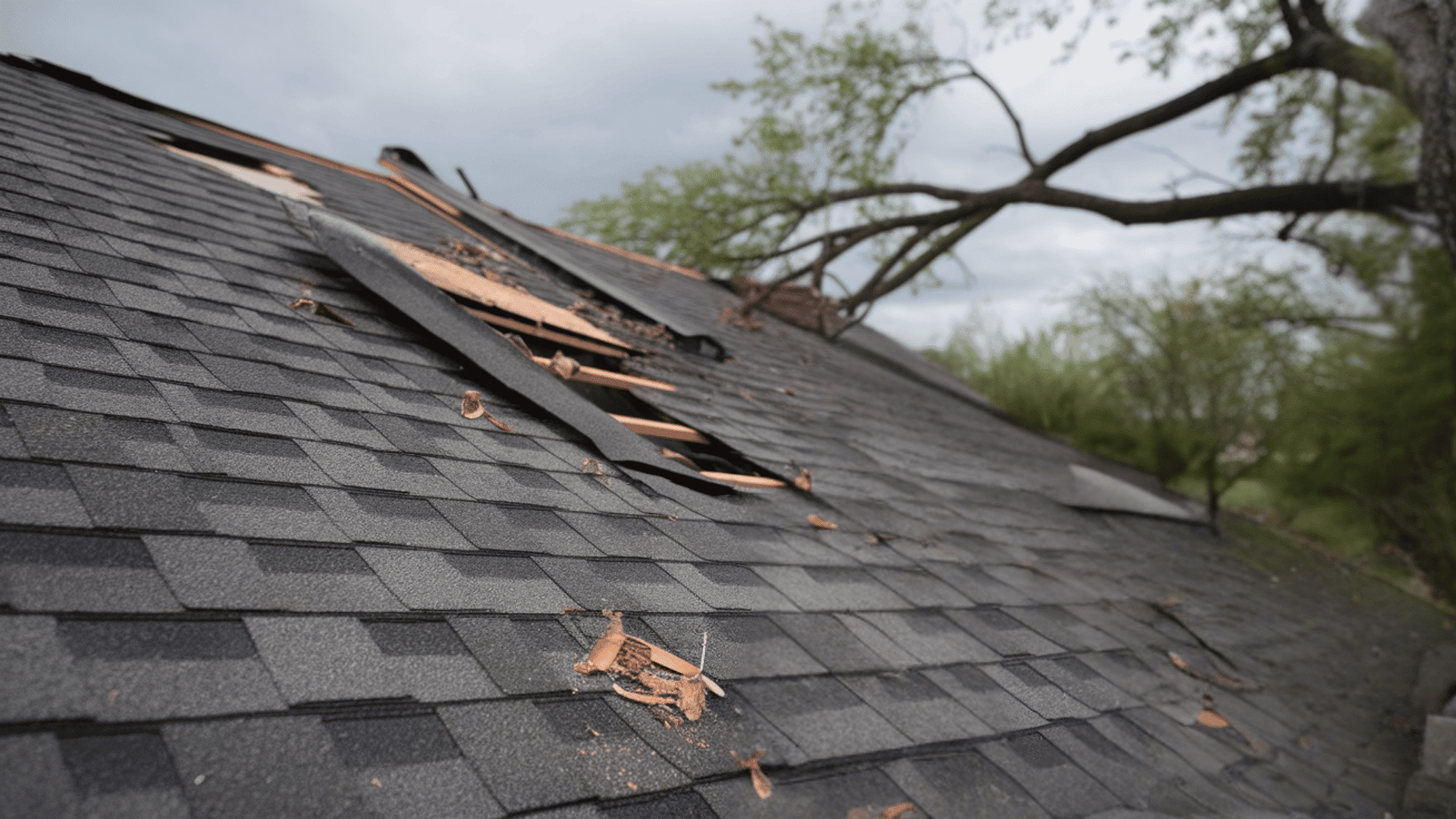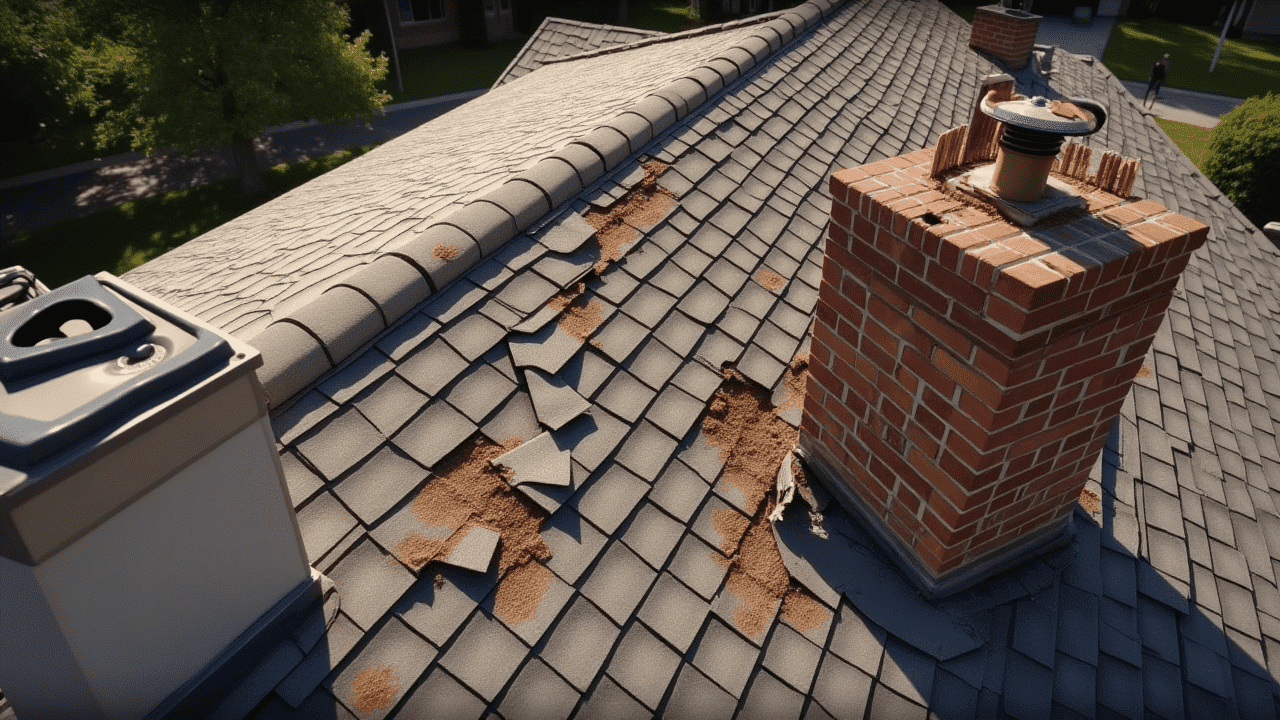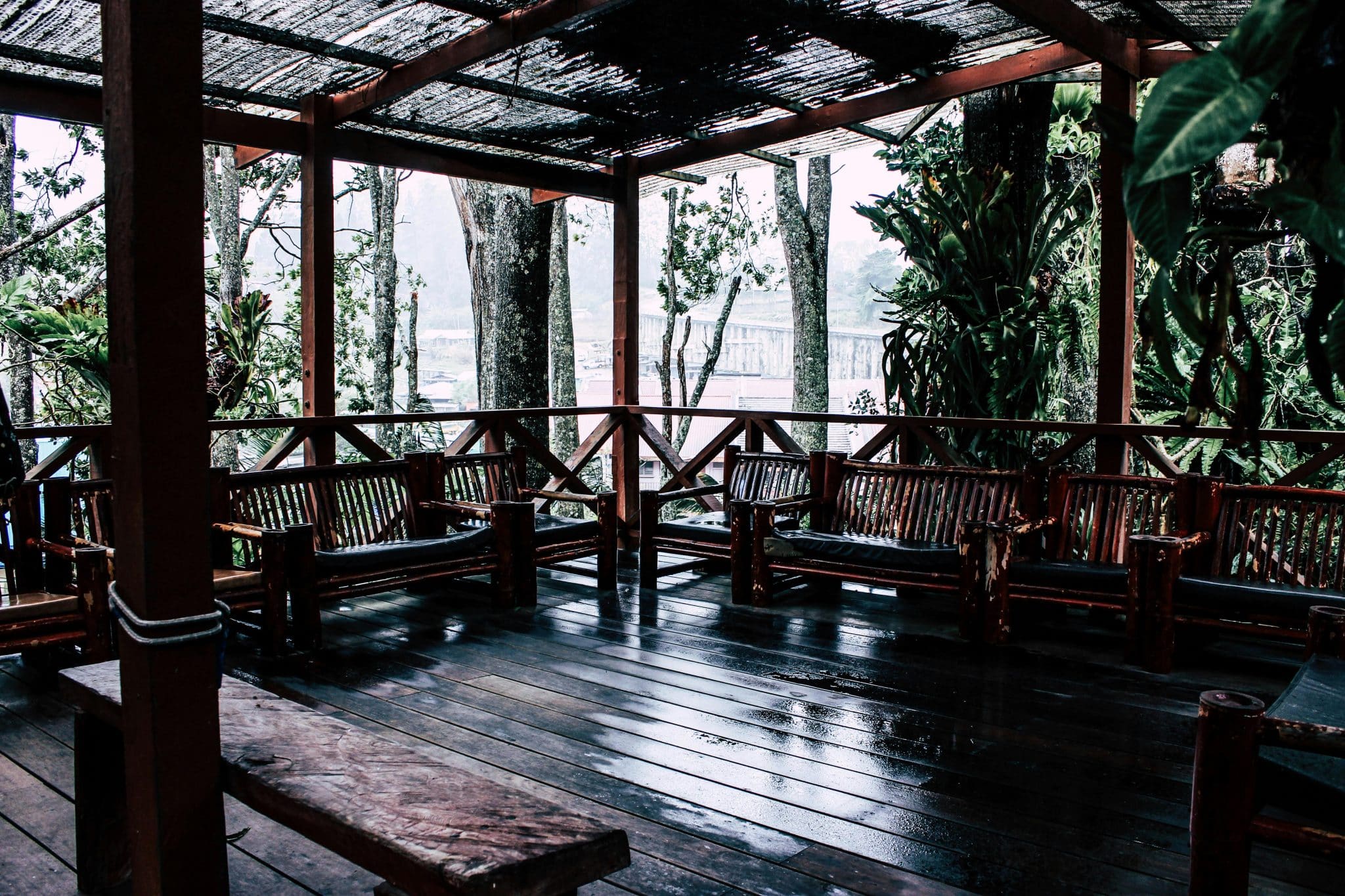Have you ever wondered if that last storm damaged your roof without you knowing it?
Wind damage to your roof can cost thousands in repairs and put your family at risk. After storms, many homeowners miss early warning signs that lead to water leaks, mold growth, and structural problems.
This blog will show you exactly how to spot wind damage to roof systems, take immediate protective steps, and work with insurance companies and contractors.
You’ll learn the difference between minor repairs you can handle and major problems that need professional help. This article also covers proven ways to prevent future wind damage.
By the end of this article, you’ll have a clear action plan for dealing with wind damage to your roof from start to finish.
What Causes Wind Damage to Your Roof?
Wind damage to roof systems is a common problem that costs homeowners thousands of dollars each year. Strong winds create pressure that can lift shingles, tear materials, and expose your home to water damage.
Understanding how wind affects your roof helps you spot problems early and take action before small issues become expensive repairs.
How Wind Creates Roof Damage
Wind creates three main forces that work together to damage your roof during storms:
- Uplift Pressure: This force pulls shingles up and away from the roof surface. It occurs when wind hits the edge of your roof and creates upward pressure underneath the materials.
- Lateral Pressure: Wind pushes directly against the sides of your home and roof surfaces. This sideways force can loosen materials and create stress on the entire roofing system.
- Suction: When wind flows quickly over your roof, it creates a vacuum effect that pulls materials upward. This happens especially on the downwind side of your roof.
Factors That Influence Wind Damage Severity
Several key factors determine how much wind damage your roof will suffer:
- Wind Speed: Winds over 50 mph can start causing damage, while winds over 75 mph often create serious problems
- Roof Age: Older roofs are more vulnerable to wind damage due to weathering and material breakdown
- Material Quality: Cheaper materials fail faster under wind stress than premium options
- Installation Quality: Poor installation leads to early failure and increased vulnerability
- Roof Shape: Complex designs with multiple angles face more stress than simple shapes
- Storm Duration: Longer storms create sustained pressure that weakens materials over time
- Nearby Trees: Large trees can fall and cause direct impact damage during high winds
Signs of Wind Damage to Your Roof
Knowing what to look for helps you catch wind damage early. Some signs are obvious. Others are subtle but just as important.
Exterior Signs You Can See
- Missing or lifted shingles: Completely missing shingles leave your roof exposed, while partially lifted shingles let water underneath
- Granule loss: Look for granules in your gutters after storms or bare spots on shingles
- Flashing damage: Bent or missing flashing around chimneys, vents, and skylights
- Damaged gutters or ridge caps: Dents, loose sections, or missing pieces
- Debris stuck on the roof: Branches, leaves, or other materials that don’t belong
Interior Signs to Watch For
- Water stains or dripping: On ceilings or walls, especially after storms
- Musty odors: Suggest hidden moisture problems
- Sagging ceilings or wall cracks: May indicate structural damage
- Higher energy bills: Drafts from the ceiling or uneven temperatures in rooms
- Mold growth: Dark spots or fuzzy growth in attics or other areas
What to Do Immediately After The Wind Damage
Acting quickly after wind damage helps prevent more problems. Follow these steps to protect your home and family.
1. Stay Safe During Inspection:
Your safety comes first. Never take unnecessary risks when checking for wind damage to your roof.
Don’t climb on a damaged roof, as weakened structures can collapse. Use binoculars to check your roof from the ground.
Watch for power lines that may have fallen, and avoid walking under damaged areas in case debris falls.
2. Document Everything:
Proper documentation helps with insurance claims and repairs. Take photos from multiple angles, including both wide shots and close-up details.
Use your phone to add date and time stamps. Write down the date and time you found the damage, record weather conditions when the damage occurred, and keep receipts for any emergency repairs.
3. Protect Your Home Right Away:
Some temporary fixes can prevent more damage while you wait for professional help. Cover exposed areas with tarps secured with boards and nails.
Clear debris from gutters and drainage areas. Place buckets under active leaks and move furniture away from wet areas. Use fans to help dry wet surfaces.
4. Contact Your Insurance Company:
Report the claim within 24-48 hours of discovering the damage. Provide them with your documentation and photos.
Ask about coverage for temporary repairs. Get a claim number and adjuster contact information for your records.
5. Find a Qualified Roofer:
Get professional help as soon as possible to assess the full extent of the damage. Look for licensed and insured contractors.
Check reviews and ask for local references. Get multiple estimates for comparison. Avoid door-to-door salespeople who appear after storms, and make sure any contractor you hire is reputable.
Repair Wind Damage: Understanding Your Options
The right repair approach depends on how much damage your roof has suffered. Some fixes are simple. Others require professional help.
Types of Repairs for Wind Damage
- Minor Repairs: Replacing a few missing shingles and resealing small gaps in flashing are typical minor repairs. These also include clearing debris from gutters and fixing loose trim or fascia boards.
- Moderate Repairs: Replacing multiple rows of shingles and fixing damaged flashing around chimneys or vents fall into this category. You might also need to repair small sections of roof decking or replace damaged gutters and downspouts.
- Major Repairs: Replacing entire roof sections and fixing structural damage to trusses or rafters requires major repair work. Complete roof replacement and repairing water damage inside the home are also major undertakings.
When to DIY vs. Hire a Pro for Wind Damage
| DIY Repairs Work For | Hire Professionals For |
|---|---|
| Replacing just a few shingles | Any work that requires climbing on the roof |
| Cleaning gutters and downspouts | Electrical work near damaged areas |
| Sealing small gaps with roofing cement | Structural repairs or replacements |
| Installing temporary tarps | Complex flashing repairs |
Safety Warning: Even simple repairs can be dangerous. Falls from roofs cause serious injuries every year. When in doubt, hire a professional.
Typical Timelines and Costs
| Repair Type | Timeline | Cost Range | Examples |
|---|---|---|---|
| Minor Repairs | 1-2 days | $150-$1,500 | Replacing 5-10 shingles, minor flashing work |
| Moderate Repairs | 3-7 days | $1,500-$7,000 | Replacing 25-50% of the roof surface, and gutter replacement |
| Major Repairs | 1-3 weeks | $7,000-$20,000+ | Partial or complete roof replacement |
Factors That Affect Cost: Roof size and complexity, material type, local labor costs, permits, and seasonal demand.
Quality Wind Damage to Roof Solutions
- Get multiple written estimates from licensed contractors
- Check references and verify insurance coverage
- Read contracts carefully before signing
- Don’t pay in full until work is complete
How to Prevent Wind Damage to Your Roof?
Prevention costs less than repairs. Regular maintenance and smart choices help your roof survive future storms.
- Walk around your home monthly and check for loose or damaged shingles
- Clean gutters twice yearly and ensure proper drainage away from your home
- Trim tree branches at least 6 feet from your roof before storm season
- Schedule annual professional roof inspections and address small problems early
- Install architectural shingles rated for high wind speeds with proper installation
- Remove dead trees and secure loose outdoor items before storms
- Keep your yard free of debris that could blow onto your roof
- Ensure adequate roof ventilation with ridge vents and soffit vents
- Consider hurricane straps and upgrade older homes to current building codes
Insurance Claims After Wind Damage to the Roof
Insurance can help pay for wind damage repairs, but the process requires understanding your coverage and acting quickly.
Most policies cover sudden wind damage from storms, falling trees, and resulting water damage, but exclude gradual wear or flood damage.
Contact your insurance company within 24-48 hours of discovering damage, document everything with photos and detailed notes, and be present during the adjuster’s inspection.
Get your own estimates from qualified contractors to compare with insurance assessments, and never sign over your insurance check or pay contractors large amounts upfront.
Keep records of all communications and expenses, understand the difference between actual cash value and replacement cost coverage, and consider hiring a public adjuster for complex claims.
Watch for red flags like door-to-door contractors after storms or pressure to sign contracts immediately, and remember that you choose the contractor while insurance determines coverage amounts.
Final Thoughts
Wind damage to your roof doesn’t have to become a costly nightmare.
By recognizing the warning signs early, taking immediate protective steps, and working with qualified professionals, you can minimize damage and keep repair costs under control.
Remember that prevention is always cheaper than repairs. Regular maintenance, proper materials, and smart landscaping choices will help your roof withstand future storms.
From minor shingle repairs to major structural work, understanding your insurance coverage and choosing the right contractor makes all the difference.
Don’t wait until the next storm hits to assess your roof’s condition. Take action now to protect your home and family.
Have you checked your roof lately? A simple inspection today could save you thousands tomorrow when wind damage to roof systems strikes your neighborhood.










